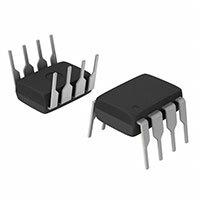MCP2562-E/P,2362838,总线, CAN, 收发器, CAN, LIN, 1, 1, 4.5 V, 5.5 V, DIP,MICROCHIP



| 型号 | 制造商 | 描述 | 操作 |
| MCP2562-E/P [更多] | Microchip Technology Inc | IC TXRX CAN 8DIP | 搜索 查看资料 |
| 型号 | 制造商 | 描述 | 操作 |
| MCP2562-E/P [更多] | Microchip Technology Inc | CAN Interface IC CAN Tranceiver RoHS: Compliant | 搜索 |
| 型号 | 制造商 | 描述 | 操作 |
| MCP2562-E/P [更多] | Microchip Technology Inc | CAN Tranceiver RoHS: Compliant | pbFree: Yes Min Qty: 1 | 搜索 |
| 型号 | 制造商 | 描述 | 操作 |
| MCP2562-E/P [更多] | Microchip Technology Inc | CAN 1Mbps 5V Automotive 8-Pin PDIP RoHS: Compliant | 搜索 |
| 型号 | 制造商 | 描述 | 操作 |
| MCP2562-E/P [更多] | Microchip Technology Inc | | 搜索 |
| 型号 | 制造商 | 描述 | 操作 |
| MCP2562-E/P [更多] | Microchip Technology Inc | CAN 1Mbps Standby 5.5V 8-Pin PDIP Tube - Rail/Tube (Alt: MCP2562-E/P) RoHS: Compliant | 搜索 |
| MCP2562-E/P [更多] | Microchip Technology Inc | CAN 1Mbps Standby 5.5V 8-Pin PDIP Tube (Alt: MCP2562-E/P) RoHS: Compliant | 搜索 |
| 型号 | 制造商 | 描述 | 操作 |
| MCP2562-E/P [更多] | Microchip Technology Inc | CAN 1Mbps 5V Automotive 8-Pin PDIP Tube RoHS: Compliant | 搜索 |
| MCP2562-E/P [更多] | Microchip Technology Inc | CAN 1Mbps 5V Automotive 8-Pin PDIP Tube RoHS: Compliant | 搜索 |
| MCP2562-E/P [更多] | Microchip Technology Inc | CAN 1Mbps 5V Automotive 8-Pin PDIP Tube RoHS: Compliant | 搜索 |
| 型号 | 制造商 | 描述 | 操作 |
| MCP2562-E/P [更多] | Microchip Technology Inc | CAN 1Mbps 5V Automotive 8-Pin PDIP Tube RoHS: Compliant | 搜索 |
| MCP2562-E/P [更多] | Microchip Technology Inc | CAN 1Mbps 5V Automotive 8-Pin PDIP Tube RoHS: Compliant | 搜索 |
| 型号 | 制造商 | 描述 | 操作 |
| MCP2562-E/P [更多] | Microchip Technology Inc | , CAN, , 8PDIP RoHS: Compliant | 搜索 |
| 型号 | 制造商 | 描述 | 操作 |
| MCP2562-E/P [更多] | Microchip Technology Inc | Microchip MCP2562-E/P, CAN Transceiver 1-channel IEC 61000-4-2, 8-Pin PDIP RoHS: Not Compliant | 搜索 查看资料 |
| 型号 | 制造商 | 描述 | 操作 |
| MCP2562-E/P [更多] | Microchip Technology Inc | CAN Transceiver | 搜索 查看资料 |
| 型号 | 制造商 | 描述 | 操作 |
| MCP2562-E/P [更多] | Microchip Technology Inc | Integrated circuit: CAN transceiver, Channels:1, 1Mbps, DIP8 | 搜索 |
| 参考图片 | 制造商 / 描述 / 型号 / 仓库库存编号 / 别名 | 操作 | |
 | Microchip Technology IC TXRX CAN 8DIP 详细描述:全 收发器 1/1 CAN 8-PDIP 型号:MCP2562-E/P 仓库库存编号:MCP2562-E/P-ND | 无铅 | 搜索 |
| 参考图片 | 型号/品牌 | 描述 / 技术参考 | 操作 |
 | MCP2562-E/P Microchip Technology | CAN 接口集成电路 | 查价格库存 查看详细 |
| 参考图片 | 制造商 / 说明 / 型号 / 仓库库存编号 | 操作 | |
 | Microchip Technology Inc. Microchip MCP2562-E/P, CAN Transceiver 1-channel IEC 61000-4-2, 8-Pin PDIP 型号:MCP2562-E/P 仓库库存编号:70415106 |  | 搜索 |
| 制造商产品编号 | 仓库库存编号 | 制造商 / 说明 / 规格书 | 操作 |
MCP2562-E/P | 2362838 | MICROCHIP 总线, CAN, 收发器, CAN, LIN, 1, 1, 4.5 V, 5.5 V, DIP | 搜索 |
| 参考图片 | 型号/品牌 | 描述 / 技术参考 | 操作 |
 | MCP2562-E/P Microchip Technology | CAN 接口集成电路 | 查价格库存 查看详细 |
| 参考图片 | 制造商 / 说明 / 型号 / 仓库库存编号 | 操作 | |
 | Microchip Interface IC CAN DIL-8, MCP2562-E/P, Microchip 型号:MCP2562-E/P 仓库库存编号:110-87-564 | 搜索 |
进行最后一道重要生产流程所在的国家

